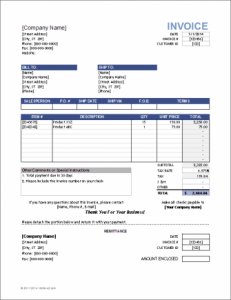Content

However, if the non-Federal Administrative Costs in Accounting: Definition & Examples desires to have the review accomplished after a solicitation has been developed, the Federal awarding agency or pass-through entity may still review the specifications, with such review usually limited to the technical aspects of the proposed purchase. A non-Federal entity that is a state agency or agency of a political subdivision of a state and its contractors must comply with section 6002 of the Solid Waste Disposal Act, as amended by the Resource Conservation and Recovery Act. When contracting for architectural and engineering (A/E) services, geographic location may be a selection criterion provided its application leaves an appropriate number of qualified firms, given the nature and size of the project, to compete for the contract. The non-Federal entity must maintain written standards of conduct covering conflicts of interest and governing the actions of its employees engaged in the selection, award and administration of contracts. No employee, officer, or agent may participate in the selection, award, or administration of a contract supported by a Federal award if he or she has a real or apparent conflict of interest. The officers, employees, and agents of the non-Federal entity may neither solicit nor accept gratuities, favors, or anything of monetary value from contractors or parties to subcontracts. However, non-Federal entities may set standards for situations in which the financial interest is not substantial or the gift is an unsolicited item of nominal value.
Under some extraordinary circumstances, where it is in the best interest of the Federal Government and the non-Federal entity to establish alternative costing arrangements, such arrangements may be worked out with the Federal cognizant agency for indirect costs. Pre-award costs are those incurred prior to the effective date of the Federal award or subaward directly pursuant to the negotiation and in anticipation of the Federal award where such costs are necessary for efficient and timely performance of the scope of work. Such costs are allowable only to the extent that they would have been allowable if incurred after the date of the Federal award and only with the written approval of the Federal awarding agency. If charged to the award, these costs must be charged to the initial budget period of the award, unless otherwise specified by the Federal awarding agency or pass-through entity. Measurement of costs of abnormal or mass severance pay by means of an accrual will not achieve equity to both parties.
Management Decisions
In those instances where there is no basis for determining the fair market value of the services rendered, the non-Federal entity and the cognizant agency for indirect costs must negotiate an appropriate allocation of indirect cost to the services. For rates covering the current period, either a rate adjustment or a refund, as described in paragraphs and of this section, must be required by the cognizant agency for indirect costs. The choice of method must be at the discretion of the cognizant agency for indirect costs, based on its judgment as to which method would be most practical. All activities which benefit from the non-Federal entity’s indirect (F&A) cost, including unallowable activities and donated services by the non-Federal entity or third parties, will receive an appropriate allocation of indirect costs. Central service cost allocation plan means the documentation identifying, accumulating, and allocating or developing billing rates based on the allowable costs of services provided by a State or local government or Indian tribe on a centralized basis to its departments and agencies. G&A is part of SG&A expenses or selling, general, and administrative expenses.
The auditor’s determination of whether a deficiency in internal control is a significant deficiency or a material weakness for the purpose of reporting an audit finding is in relation to a type of compliance requirement for a major program identified in the Compliance Supplement. Coordinate a management decision for cross-cutting audit findings (see in § 200.1 of this part) that affect the Federal programs of more than one agency when requested by any Federal awarding agency whose awards are included in the audit finding of the auditee.
How to Calculate Administrative Expenses?
The auditor’s opinion on whether the financial statements were prepared in accordance with GAAP, or a basis of accounting required by state law, and the auditor’s in relation to opinion on the schedule of expenditures of Federal awards were unmodified. The phase of a Federal program in its life cycle at the Federal agency may indicate risk. For example, a new Federal program with new or interim regulations may have higher risk than an established program with time-tested regulations.
This post is to be used for informational https://personal-accounting.org/s only and does not constitute legal, business, or tax advice. Each person should consult his or her own attorney, business advisor, or tax advisor with respect to matters referenced in this post.
Facilities and Administrative Cost Pools
Depreciation methods once used may not be changed unless approved in advance by the cognizant agency. The depreciation methods used to calculate the depreciation amounts for indirect (F&A) rate purposes must be the same methods used by the non-Federal entity for its financial statements. Costs of bonding required by the non-Federal entity in the general conduct of its operations are allowable as an indirect cost to the extent that such bonding is in accordance with sound business practice and the rates and premiums are reasonable under the circumstances.
What are administrative and overhead costs?
Administrative Overhead: Costs associated with running a business such as employee salaries, rent, office supplies, insurance, and professional services. Selling Overhead: Costs associated with marketing and selling products such as advertising, promotions, and commissions.
